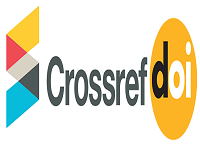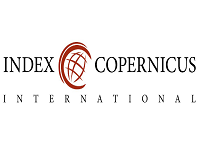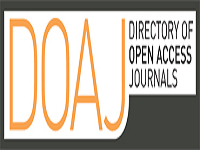Implementation of Situational Leadership Style of Principals in 21 St Century Vocational Schools
Keywords:
Situational Leadership Style, Principal, 21st Century Vocational SchoolAbstract
The principal as a leader in the school has a central role in realizing education that meets competencies and competes globally. During the Covid-19 pandemic, the world of education is hit by various problems and challenges of 21st century competencies, therefore it is necessary to have a competent leader who can overcome various problems. One way is to implement the situational leadership style of the principal in vocational schools. The research method in this writing uses a literature review by collecting data from relevant sources such as books, journals, and others. The results of this study are an effective way to implement the situational leadership style of the principal in vocational schools. To implement the situational leadership style, the principal in vocational schools must have adequate competencies plus insight into the needs of the school to face the needs of the 21st century and understand the supporting and inhibiting factors in schools by applying 4 dimensions of situational leadership style. In the end, if implemented properly, it will result in progress in the quality of education in the school. The principal must also improve his abilities by attending principal training anywhere and visiting schools that have succeeded in achieving their vision, mission and goals. The success of the implementation of the principal's situational leadership is also influenced by the positive thinking of the leader.
Downloads
References
1. Afrina, E., Rahayu, D., Harja, T. I., Muhammad, R., Zunivar, Y. A., Ramdlaningrum, H., & Lauranti, M. (2018). Vokasi Di Era Revolusi Industri: Kajian Ketenagakerjaan Di Daerah. Perkumpulan Prakarsa: Jakarta.
2. Aisyah, S., & Takdir, S. (2017). implementasi gaya kepemimpinan situasional kepala sekolah di SMP Negeri 1 Wamena Kabupaten Jayawijaya. Jurnal Kepemimpinan dan Pengurusan Sekolah, 2 (2), 119-132. Accessed from http://ejurnal.stkip-pessel.ac.id/index.php/kp/article/view/116.
3. Bhattacharyya, E. (2018). Stakeholders perspective on communicative competence in industry 4.0: walk the talk of informative technologists. In SHS Web of Conferences. EDP Sciences, 53 (3001),1-12. Accessed from https://files.eric.ed.gov/fulltext/ED090725.pdf.
4. Chen, C., Tsai S., Chen, H., & Wu, H. (2016) .The Relationship between the Principal’s Positive Leadership and School Effectiveness-Take School Organizational Culture as The Mediator. European Journal of Psychological Research. 3 (2), 12-23. Accessed from https://www.idpublications.org/wp-content/uploads/2016/07/Full-Paper-THE-RELATIONSHIP-BETWEEN-THE-PRINCIPAL%E2%80%99S-POSITIVE-LEADERSHIP-AND-SCHOOL-EFFECTIVENESS.pdf.
5. Gaol, N. T. L. (2017). Teori dan implementasi gaya kepemimpinan kepala sekolah. Kelola: Jurnal Manajemen Pendidikan, 4 (2), 213-219. Accessed from:
https://ejournal.uksw.edu/kelola/article/view/1295.
6. Hearn, J., Feuer, D., Higginson, I, J., & Sheldon, T. (1999). Systematic review. Journal Palliative Medicine. 13, 75-80. doi:10.1191/026921699670710078.
7. Ibrahim, B. (1992). Pengolaham Pustakawan Sekolah. Jakarta: Bumi Aksara.
8. Kadarisman, M. (2012).ManajemenPengembangan Sumber Daya Manusia. Jakarta : Rajawali Pers.
9. Kartono, K. (2006). Pemimpin dan Kepemimpinan. Jakarta: Penerbit PT. Rajagrafindo Persada.
10. Lestari, P.W. (2015). Pengaruh gaya kepemimpinan situasional terhadap kinerja dosen di UNISBA. Jurnal Revitalisasi, Jurnal Ilmu Manajemen, 4, 89-98. Accessed from https://ejournal.uniska-kediri.ac.id/index.php/Revitalisasi/article/view/766/601.
11. Moorhead, G., & Griffin, R. W. (2008). Organizational behavior managing people and organizations. Dreamtech Press.
12. Purwanto, N. 2005. Administrasi dan Supervisi Pendidikan, Edisi Revisi. Bandung: Remaja Rosdakarya.
13. Reddin, W. J. (1970). Managerial Effectiveness. New York: McGraw-Hill.
14. Rini, I. S., Nurhaeni, I. D. A., & Indrawati, C. D. S. The Effect of the Style of The Principal’s Leadership Towards the Teachers’ Performance Through Work Motivation at Vocational High Schools. International Journal of Educational Research Review, 4 (1), 97-105. Accessed from https://dergipark.org.tr/en/pub/ijere/article/487226.
15. Sudira, P. (2016). TVET abad XXI: Filosofi, teori, konsep, dan strategi pembelajaran vokasional. Yogyakarta: UNY.
16. Sudira, P. (2018). Metodelogi Pembelajaran Vokasional Abad XII. Yogyakarta. UNY Press.
17. Suryanto, D., & Prihatiningsih, W. (2016). Pengaruh gaya kepemimpinan terhadap komitmen organisasi karyawan UKM di wilayah Depok Jawa Barat. Jurnal Vokasi Indonesia, 4 (1). Accessed from http://www.jvi.ui.ac.id/index.php/jvi/article/viewFile/48/46.
18. Thoha, M. (1996). Perilaku Organisasi. Jakarta: PT Gramedia Pustaka Utama.
19. Thoha, M. (2003). Dimensi-Dimensi Prima Ilmu Administrasi Negara. Jakarta: PT. Radja Grafindo Persada.
20. Wahjosumidjo. (1994). Kepemimpinan Kepala Sekolah Tinjauan Teoritik dan Permasalahannya. Jakarta : PT Raja Grafindo Persada.
21. Wahjosumidjo. (2002). Kepemimpinan Kepala Sekolah Tinjauan Teoritik Dan Permasalahan. Jakarta: PT. Raja Grafindo Persada.
22. Wahyudi. (2009). Kepemimpinan Kepala Sekolah Dalam Organisasi Pembelajaran (Learning Organization). Pontianak: Alfabeta.
23. Wiyono, B. B. (2017). The Effect of Selfevaluation on the Principals’ Transformational Leadership, Teachers’ Work Motivation, Teamwork Effectiveness, and School Improvement. International Journal of Leadership in Education, 1-21. Accessed from
https://www.tandfonline.com/doi/abs/10.1080/13603124.2017.1318960.



 .
.









